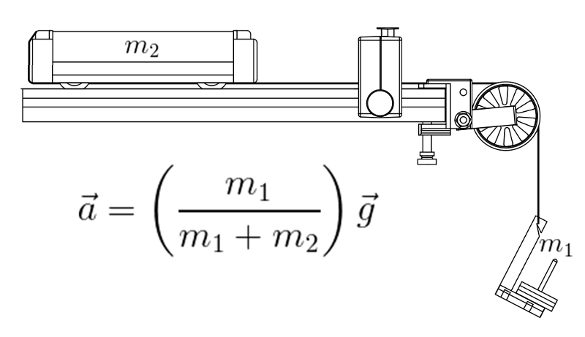Newton’s Second Law
Consider the below system that includes massless string and a frictionless pulley. The weight of the mass and hanger over the pulley causes the system to accelerate. Deriving the relationship is straightforward, and with the mass terms combined, students can begin to mentally manipulate different scenarios of how the system mass might be distributed.

As your students become more familiar with the concept of Newton’s Second Law, hands on activities will help deepen their understanding by allowing them to easily change system variables in the real world, and directly measure the effect — in this case: acceleration.
With a Standard PAScar PAStrack System (ME-5711), mass and hanger (ME-8979) students can explore how a constant applied force affects the change in velocity. This can be measured using a stopwatch to measure the time lapse over a specified distance. A more accurate means of measuring changes in velocity of the system directly with a motion sensor (PS-2103A) and data collection software such as PASCO Capstone.
Have your students explore by experimentation:
- If m1 and m2 are equal, what is the acceleration of the system?
- What effect will doubling the weight of the mass and hanger have on the acceleration of the system?
- How would that compare to a situation where instead the mass of m2 was doubled?
PASCO dynamics systems are versatile enough to allow students to perform experiments including:
- Kinematics
- Newton’s Laws
- Conservation of Energy
- Conservation of Momentum
- Impulse
- Work-Energy



